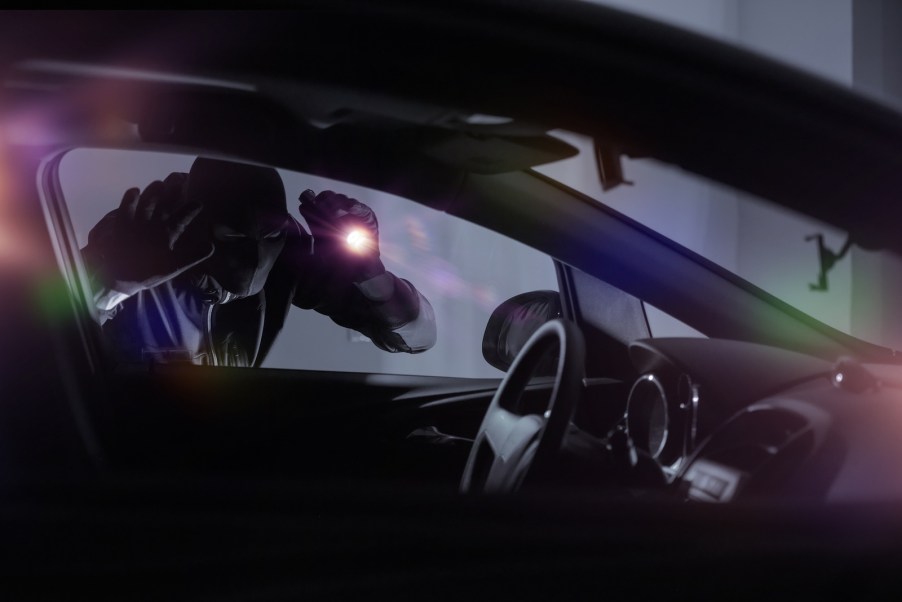
If Someone’s at Your Door With a Wire Antenna, Grab Your Car Keys and Run
The latest generation of “keyless” car fobs are pretty slick. You can slip your fob into your pocket, and when you approach your car it automatically unlocks. Once you’re settled in the driver’s seat, you can push the engine start button and you’re good to go. There’s only one problem: these keyless entry vehicles can make car theft easier.
Renault pioneered keyless car entry in 1982. In 1998, Mercedes-Benz introduced the first modern system “Keyless-Go.” In the intervening decades, keyless entry and keyless start became must-have feature for luxury cars. But criminals quickly found that if they could relay the key’s signal to the car, they could break in and steal the vehicle. Early “relay attacks” required complex equipment. But in 2017, a Beijing security firm built everything it needed for such an attack with $22 of hardware from a Radioshack sort of store. The goal was to warn automakers how vulnerable these systems are.
The latest automotive systems require the car and key send several signals back and fourth before unlocking or starting the car. So here’s how a “relay attack” works. One thief waits next to your car with a signal receiver/transmitter. Another thief approaches your front door with a second signal receiver/transmitter. If their device cannot find a signal from your key fob, they may try an antenna. This looks like a big loop of wire they deploy by holding both arms up. So if you look outside in the middle of the night and see a stranger holding a big loop of wire to your front door, you know exactly what they are trying to do.
Once this thief has a connection with your wireless key, their accomplice opens the door and gets inside the car. Then they push the start button and drive away in your car. The entire “relay attack” can take less than a minute.

First of all, this exact kind of attack won’t work if you must push a button on your remote to unlock your car. But if you have a remote key fob that unlocks your car automatically, you could be in trouble.
So what can you do? Thieves are counting on you tossing your car key fob aside as soon as you walk through your front door. One intervention you can implement today is to keep your car keys as far from any door as possible. Here’s a bonus: If you keep your car key fob upstairs, by your bed, you may be able to trigger your car alarm if you see anything suspicious at night. But remember to move your spare keys too.
Another easy intervention is turning off your wireless key’s signal at night. Or you can deactivate keyless entry all together. But not every automaker even gives you this option.
A third intervention is blocking your key’s signal. Some vehicle owners choose to store their key fobs in a metal box or wrapped in several layers of aluminum foil. I personally would invest in an “RFID signal blocker” bag or box. They range from $10 soft pouches to fancy valet boxes to set by the door for your keys and wallet.
The Master Locksmiths Association has several more advanced tips: Use a steering wheel lock or install an aftermarket alarm. The right alarm may pay for itself by lowering your insurance premiums. I’ll also add that you can install a LowJack tracker. Some have a remote kill switch to stop a theft in progress. The MLA recommends reprogramming your wireless keys when you buy a used car, so any copies previous owners made no longer work.
So there you have it: if you see someone standing outside your front door with a wire antenna, don’t just stand there. Grab your car keys and get far away from them. In the meantime, take proactive steps to prevent a “relay attack” by would-be car thieves.
Next, read about the ‘Kia Boys’ who are showing TikTok users how to steal cars, or see a relay theft for yourself in the video below and learn some ways to protect your keyless entry car:






